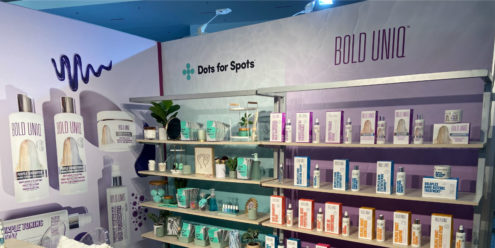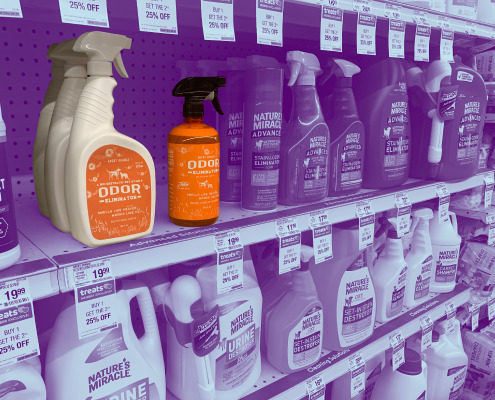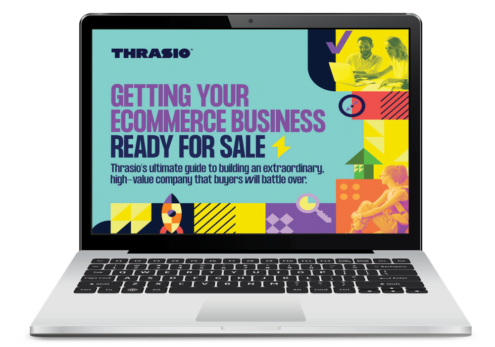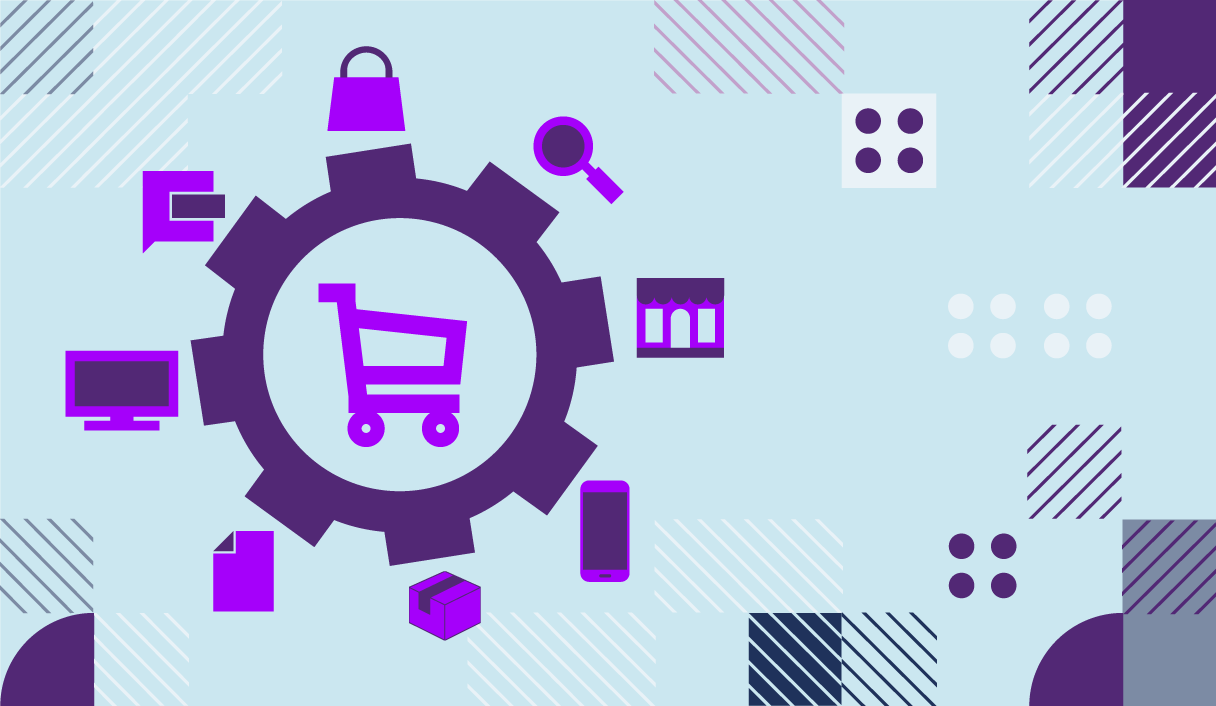Top-Shelf Selling Strategy: Secrets to Retail and Omnichannel
Reeling in ecommerce sales takes skill. But to tackle new markets, you need new tools in your box. Our sales chief helps you cast a wider net.
August 2, 2022 Thrasio Staff
Your megahit coffee frother nabbed the Amazon Best Seller Badge moooonths ago. In fact, your whole line of coffee products are buzzworthy category leaders. Revenue is up and so are your margins. Impressive? You bet. But your growth doesn’t have to stop there.
For businesses at the peak of their Amazon game, the next step is brewing up a strong omnichannel strategy.
What is omnichannel?
 People often use the term “omnichannel” when they’re simply selling products through multiple marketplaces and channels – Amazon, direct to consumer (DTC), retail, and maybe social commerce. But the endgame for a true omnichannel strategy is complete integration, so that your markets, sales data, the customer experience, and the brand are all part of one intelligent ecosystem. Each piece plays a role in lifting the business and delivers a personalized experience to the customer.
People often use the term “omnichannel” when they’re simply selling products through multiple marketplaces and channels – Amazon, direct to consumer (DTC), retail, and maybe social commerce. But the endgame for a true omnichannel strategy is complete integration, so that your markets, sales data, the customer experience, and the brand are all part of one intelligent ecosystem. Each piece plays a role in lifting the business and delivers a personalized experience to the customer.
“For any seller, developing an omnichannel strategy may be the best bet to stabilize what you’ve built and lay the foundation for explosive growth,” says Thrasio Director of Sales Michael Esposito. “Executed well, it’s a beautiful thing.”
As a heavy hitter in the ecommerce world, you’re likely already trying to knock DTC out of the park. The big swing that follows is going offline and onto store shelves, according to Esposito. “When looking at opportunities to grow your brand, traditional brick-and-mortar retail holds massive potential,” he says. In fact, Insider Intelligence notes that over 85% of shopping is still happening in physical stores.
Is your brand retail ready?
Of course, you need to ensure you’re prepared for the in-store selling experience before bringing in all those new buys. Here are a few must-haves for a brand to succeed in retail:
- Your product has to be unique. Amazon sellers can drive revenue with products that are virtually indistinguishable from others in the category. But if a product is going to be successful in-store, there needs to be something special about it or customers won’t take it off the shelf. What’s unique about your brand of milk frothers? Does it have a detachable agitator that’s dishwasher safe? Does it have five speeds instead of one? Is it beautifully designed and packaged to catch the eye? True product differentiation further lies in providing superior quality at a great price.
- You need a gross profit margin of at least 50%. Wholesaling can yield excellent gross margins – and more control over those margins. You set your price, and (in general) it sticks, which makes it different from selling through Fulfillment by Amazon (FBA), says Esposito. “It’s not a daily battle to fix your price against your competitors’ pricing, which can lead you to a dangerous race to the bottom.” You’re also not paying FBA fees or pouring money into pay-per-click ads to get eyes on your product page. But you will be fulfilling your own wholesale orders and complying with unique terms associated with major retail. You’ll incur more operating costs due to shipping errors, product returns, payment terms, and many unique service requirements by retailer. So you’ve got to be able to maintain healthy profit margins before considering a run at retail.
Assume you’re going to sell your product to retailers at a wholesale price that is a 50% discount from your full FBA retail. Depending on the category of the product, that’s a good rule of thumb (also known as keystone pricing).
“If you can store, pick, pack, and ship your products and still maintain a 50% gross margin, you’re in business,” says Esposito. “Maintain margins north of 55% and keep your operating costs in line and you may just earn rockstar status. But if your cost of goods sold already exceeds 50% of your wholesale price, it’s going to be very difficult to turn a profit in traditional retail. Remember, you’re on the hook for a lot of extra fees and costs from the major retailers, even major returns if your product doesn’t meet retailer sell-through expectations.” - Do your research. For certain categories, like cleaning supplies, there are more than a dozen national retailers that could sell your product. In other categories, like toys, you may only be able to place your product with three or four retailers – saturating your opportunities fairly quickly.
 To test the waters, think about what kind of store you want your product to be in and why. What else is on the shelves in that store? What makes your product different from those other brands? What customers are you trying to reach? And why is your product going to make a difference in their lives?
To test the waters, think about what kind of store you want your product to be in and why. What else is on the shelves in that store? What makes your product different from those other brands? What customers are you trying to reach? And why is your product going to make a difference in their lives?
The answers to these questions are going to guide your retail strategy – what stores you’re going after and how you’re going to craft your pitch to their buyers (but more on that later).
What are the drawbacks?
Of course, even if you’re certain you have the right product-market fit, breaking into traditional retail still requires a huge lift. The complexity and cost involved demands serious investment of time and effort. Think warehousing, retail-ready product packaging, point-of-purchase displays and marketing materials, unique shipping requirements by retailer, and mountains of administrative paperwork – all the things that FBA takes care of become the responsibility of your business when you’re working in retail/wholesale. Do your homework up front and make sure that “the juice is worth the squeeze.”
Supply chain is different for retail. You need to partner with a third-party logistics (3PL) company that can fulfill retail and have a systems infrastructure that connects you seamlessly to your 3PL and customer. You’ll be challenged to meet different compliance regulations or standards for both your products and packaging – and again, these challenges can and will differ by retailer. This may require legal advice or design expertise. Traditional retail triggers a fundamentally different operating structure than an FBA brand.
Managing supply chain and inventory is one of the biggest challenges of moving from FBA to an in-store environment. In retail in particular, stocking out is just not an option. Empty shelves are a retailer’s money-losing nightmare. If you miss orders, you could be hit with hefty chargebacks that could sink your brand, not to mention your reputation among buyers. If you become a headache for a buyer, you’ll lose their business for good.
In retail, people really do shop with their eyes first, which also means you need a great packaging designer who gets the voice of your brand and can make your product stand out on store shelves. The retail shopper is confronted by a sea of products and packaging, and you have a split second to attract their attention and highlight the uniqueness of your product!
The upshot of breaking into traditional retail
If you do manage to “break in,” big retailers can give your brand instant credibility. “Target and Walmart are long-established household names,” says Esposito. “Customers can assume they’re looking at quality products when they see them on the shelves of these stores. There’s an instinctual degree of trust that can pay out over the long term.”
So how do you get your products in front of buyers?
 According to Esposito, there are a few ways you can get your foot in the door with retailers.
According to Esposito, there are a few ways you can get your foot in the door with retailers.
First, attend trade shows for your category. Say you’re in the pet category. Just start Googling “top pet retail trade shows,” find one that looks like it suits your product best, and sign up. You’ll meet a lot of mom and pop buyers, but you’ll also build your network and learn from other attendees. Esposito also recommends setting up an account on faire.com, which is like an Amazon for wholesalers.
Another approach would be to contact a manufacturer’s representative. Again, a Google search will bring up a number of experienced representatives who know the industry and have established relationships with the buyers you’re trying to get your product in front of. They tend to work on a 5% commission for major accounts, but the cost might be well worth the guidance they provide. You can also meet these reps at trade shows or through referrals.
Lastly, try good old-fashioned cold calling. If you have a successful “digitally native” brand and can tout a category leadership position with great reviews, most retail merchants will give you a look. Bombard them with samples and category knowledge and they may be your next best friend!
Putting it all together: The omnichannel advantage
When an omnichannel strategy is firing on all cylinders, all the channels synergistically play a role in lifting overall sales and building brand equity. “We call it the flywheel effect,” says Esposito.
 Consider one of Thrasio’s top-performing brands, Angry Orange. The pet odor eliminator spray is on the shelves of many Target and PetSmart stores. Someone shopping for dog food in Target may see a bottle of Angry Orange pet odor eliminator and not initially buy it. But later, when they’re searching for pet odor eliminator products on their phone and Angry Orange appears with an average customer review rating of 4.4 out of 5 stars, the customer knows it’s a trusted brand. After they pull the trigger on a purchase, we can then retarget that customer for additional purchases of Angry Orange products through ads on Amazon and Google.
Consider one of Thrasio’s top-performing brands, Angry Orange. The pet odor eliminator spray is on the shelves of many Target and PetSmart stores. Someone shopping for dog food in Target may see a bottle of Angry Orange pet odor eliminator and not initially buy it. But later, when they’re searching for pet odor eliminator products on their phone and Angry Orange appears with an average customer review rating of 4.4 out of 5 stars, the customer knows it’s a trusted brand. After they pull the trigger on a purchase, we can then retarget that customer for additional purchases of Angry Orange products through ads on Amazon and Google.
We first brought Angry Orange to a few hardware stores. Products flew off the shelves, and we were able to share that success as proof positive that Angry Orange could make money for other national retailers.
“Now we’re getting more and more strategic,” says Esposito. “We’re working on omnichannel marketing from all sides and using customer intent data to craft the customer experience for DTC vs. Amazon vs. retail.”
If you’re a top seller in your category, chances are you’ve got a great product. And getting that product into as many hands as possible means meeting customers where they are – on their computers, their phones, and yes – in brick-and-mortar stores too.

Think your next move might be an exit? Check out our ebook “Getting Your Business Ready for Sale” to learn more.


